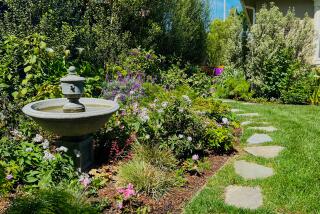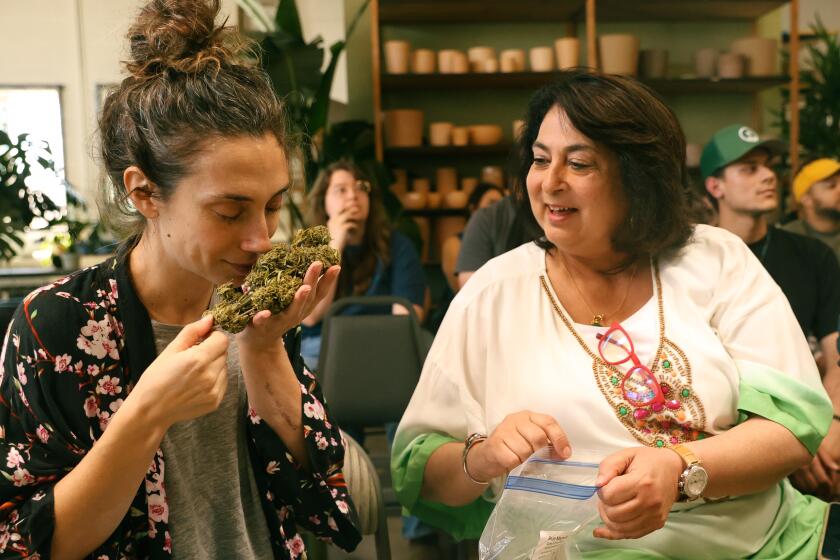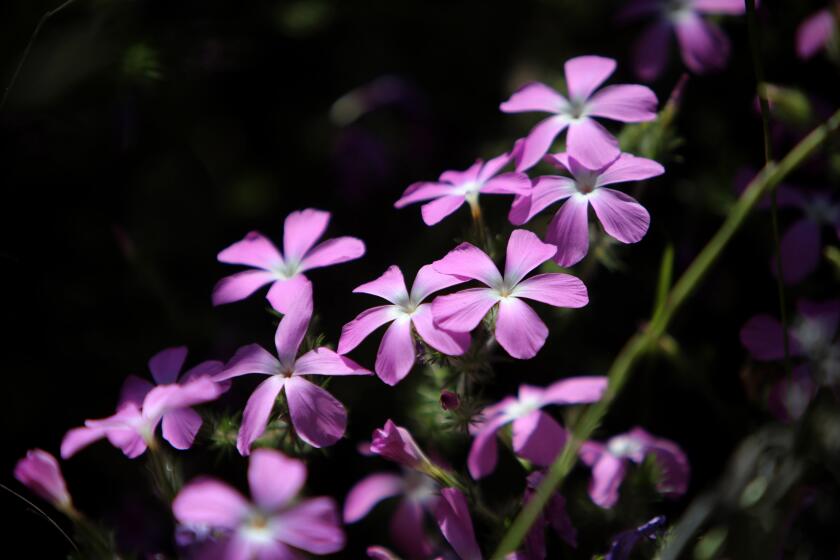GARDENING : You Prepare for Any Serious Relationship: Plant Buying Is No Different
Before bringing a plant home, gardeners should learn everything they can about it to avoid wasting money or winding up with a monster in a few years.
This will be true whether cold weather is around the corner, spring planting is imminent or your landscape project is in the planning or finishing stage.
A good rule: Always resist the impulse purchase. As they say, if it seems too good to be true, it probably is.
Start by learning the plant’s growth habits. Check various reference books. Ask the plant seller about the drawbacks as well as advantages. Try to talk to someone growing it.
Does it need sun or shade? Does your contemplated location have what’s required to keep it from struggling endlessly and looking poorly?
How tall will it get? How wide? Will something that tall or wide look out of place in your landscape? Is it likely to take over? Or will constant pruning be needed to keep it within the allotted space?
When it grows, will the shade eliminate vegetable or flower gardens, even though their present space is fine?
Will litter be a problem, such as around a swimming pool, a neatly kept lawn or a sidewalk-driveway? If female or male species create obnoxious smells or excessive mess, are you certain you have the correct type?
Will it need constant protection if Santa Ana winds are forecast or look poorly during summer heat waves?
What are the water needs? Are equally attractive plants available that are more likely to flourish with much less irrigation? Is the required amount of water likely to remain available for the foreseeable future?
If it is a flowering plant, will the colors clash with the present landscape? If it’s not in bloom, can you be certain the colors will blend?
Will its addition change current highlights? For example, while a hedge of roses may be beautiful, is that the look you desire for that area? Will it eventually remove a desirable view?
If it’s a tree, are utility lines overhead? Will it need to be removed because of them after it grows?
Is privacy important? Can the neighbor’s view of your patio be obscured or improved with a better selection? Do you want to attract birds or butterflies? Should the plants be child-friendly? Will thorns become a problem?
Some areas always are wet and soggy or hot and sunny. Are you sure your selection is correct if such conditions exist? Perhaps there may be too much of a problem area for any plant.
What’s disagreeable to you now? Are you tired of cutting grass, pruning roses, a ground cover that can’t handle foot traffic? Will the plant being considered add to existing problems?
Will it create new problems? For example, junipers are wonderful in many circumstances but they can’t keep out Bermuda grass invasions. People have been known to dig out the junipers because of the resulting tangle and increased maintenance.
Planting things such as berries or fruit trees may sound enchanting. But are you aware that they often attract messy and noisy birds? An olive tree may seem less wonderful the first time someone tracks ripe-fruit stains onto the carpet.
Sometimes it’s better to bite the bullet and remove the problem, even if it’s been in the landscape a while.
In subtropical Arizona, for example, the Washingtonia fan palms provide a perfect example of people not doing their homework. Newcomers find it a real charmer in a 1-gallon nursery container and find the price, often under $2, hard to believe.
Now, the Washingtonia is a good choice if you have the room. But the little charmer just keeps growing. The Mexican fan palm, W. robusta, can reach 100 feet high, while the California fan palm, W. filifera, will reach 60 feet and spread 20 feet wide. That’s pretty dominating stuff in a typical yard.
So take the time to find what’s needed. Rome wasn’t built in a day, and neither is a great home landscape. And there usually will be several plants that will thrive and look great under most conditions.
For a copy of the 32-page booklet, Associated Press Guide to Home Plants, send $4 to House Plants, P.O. Box 1562, New York City, NY 10116-1562.






